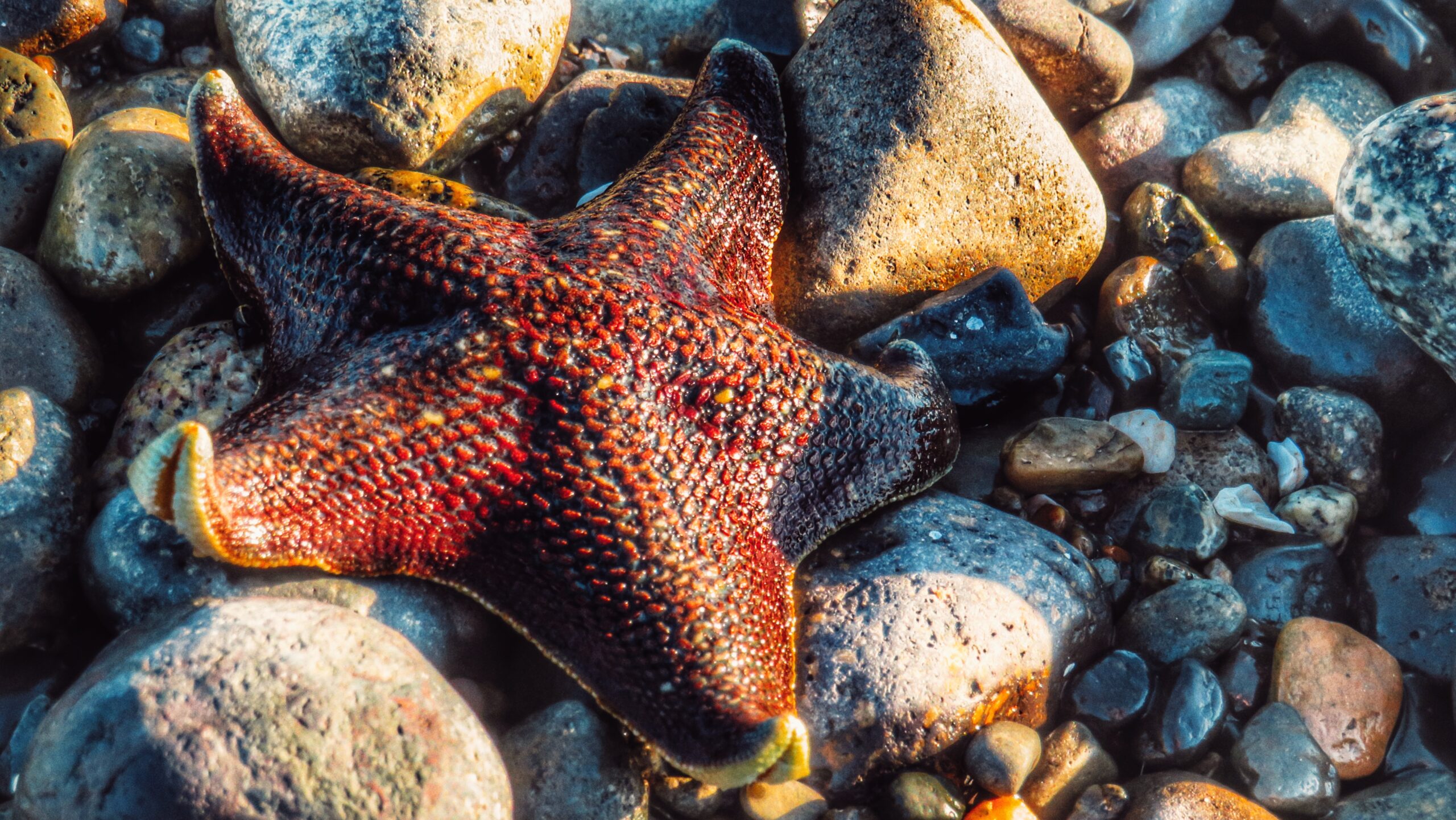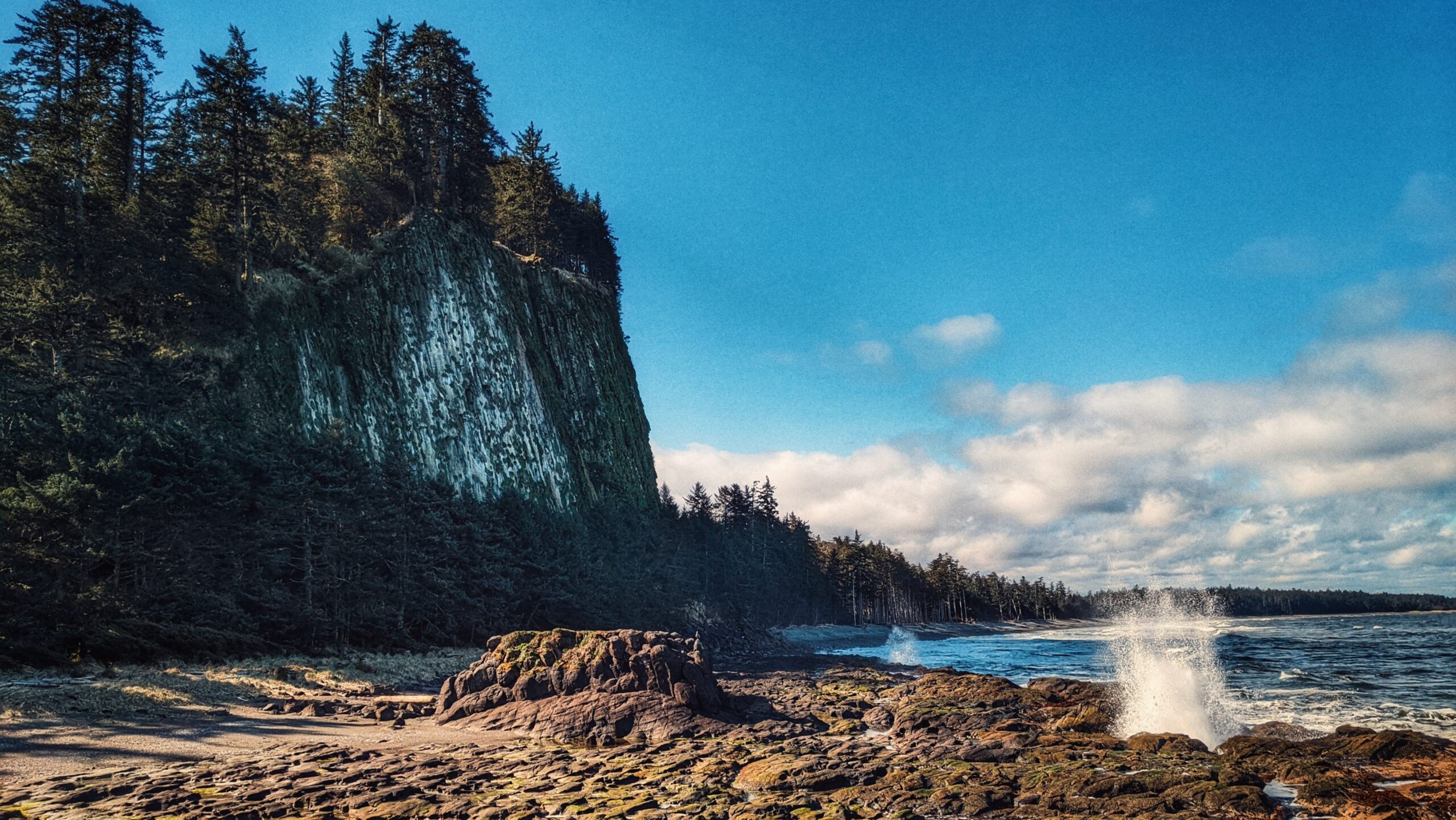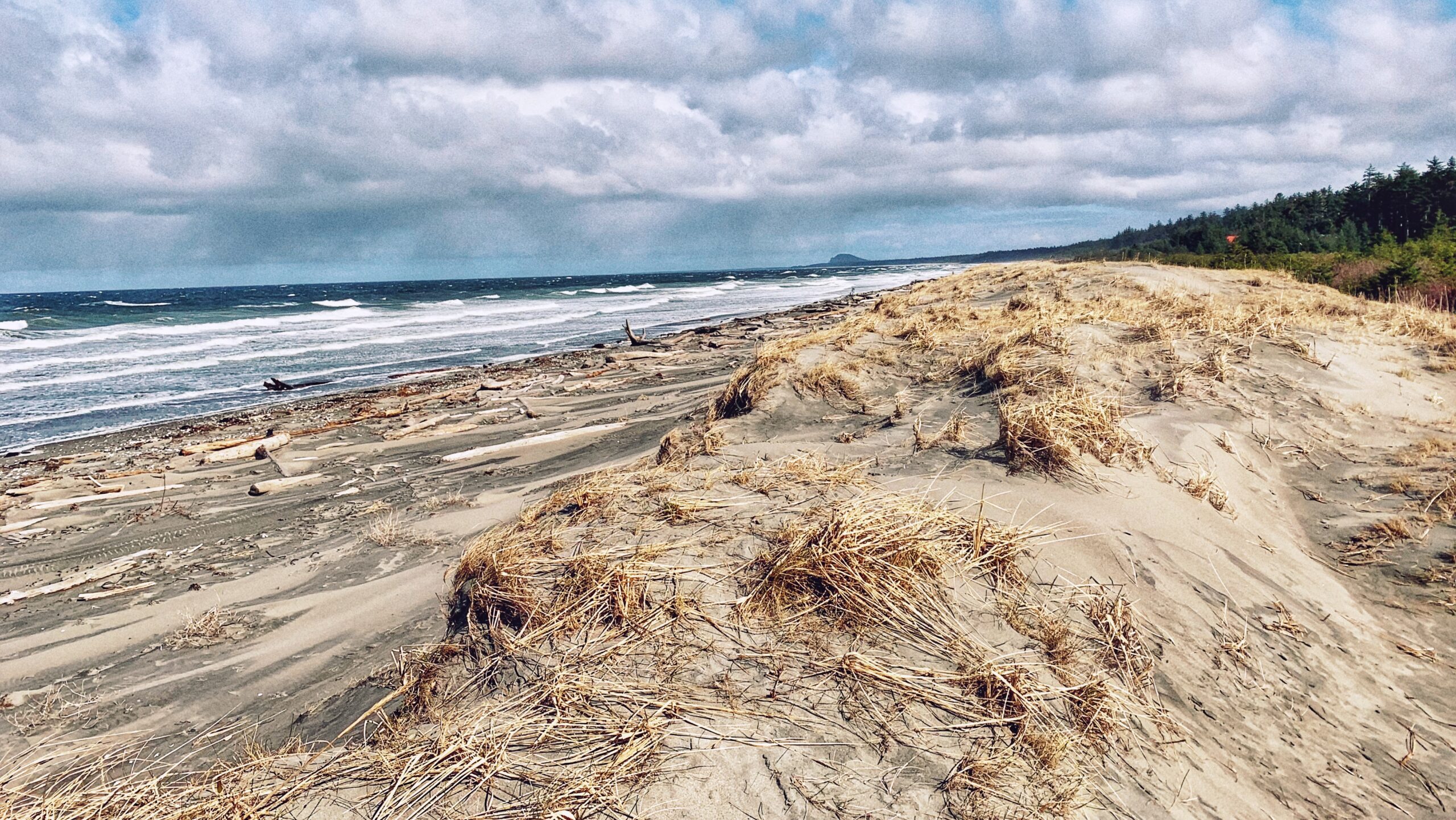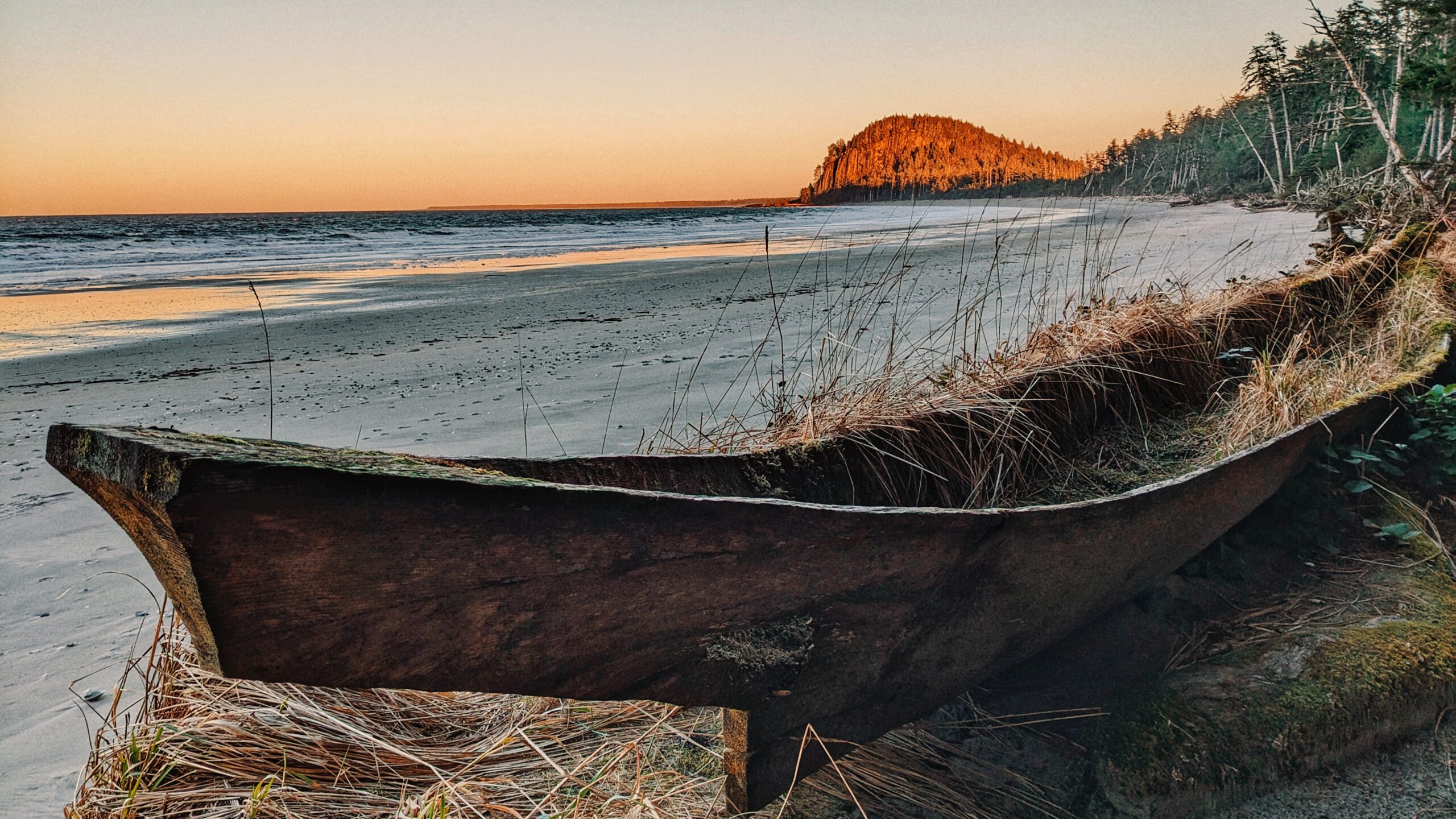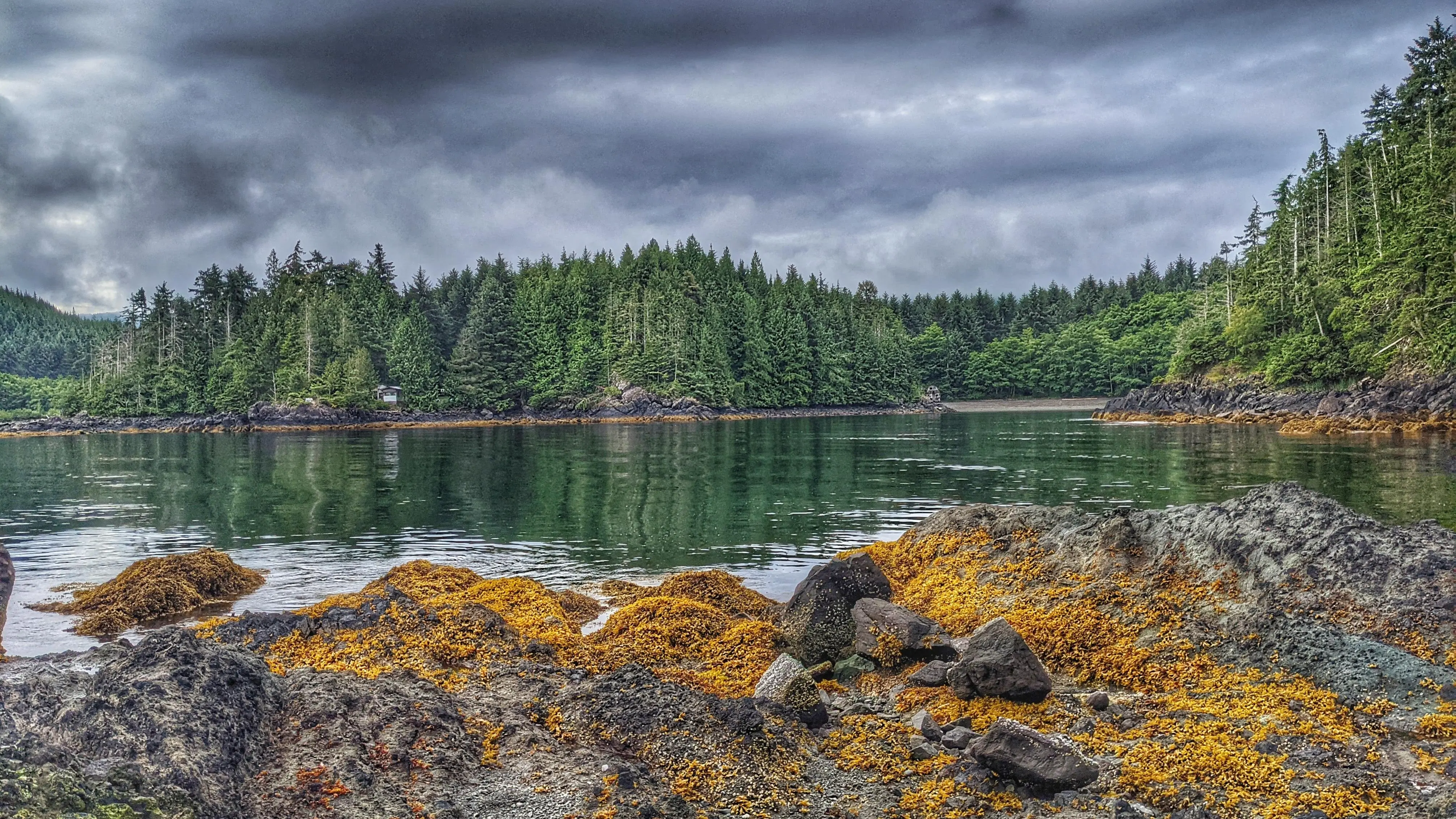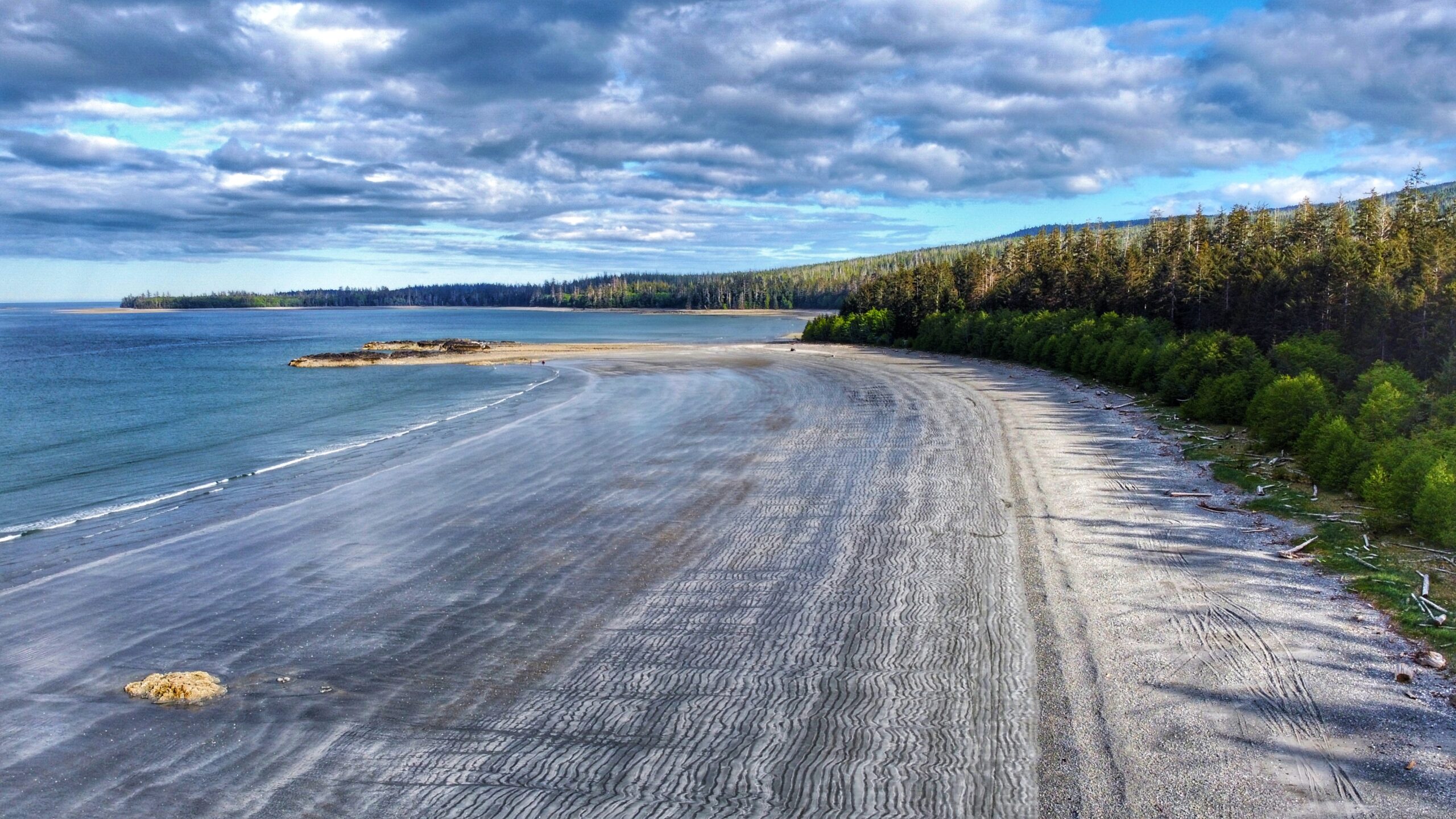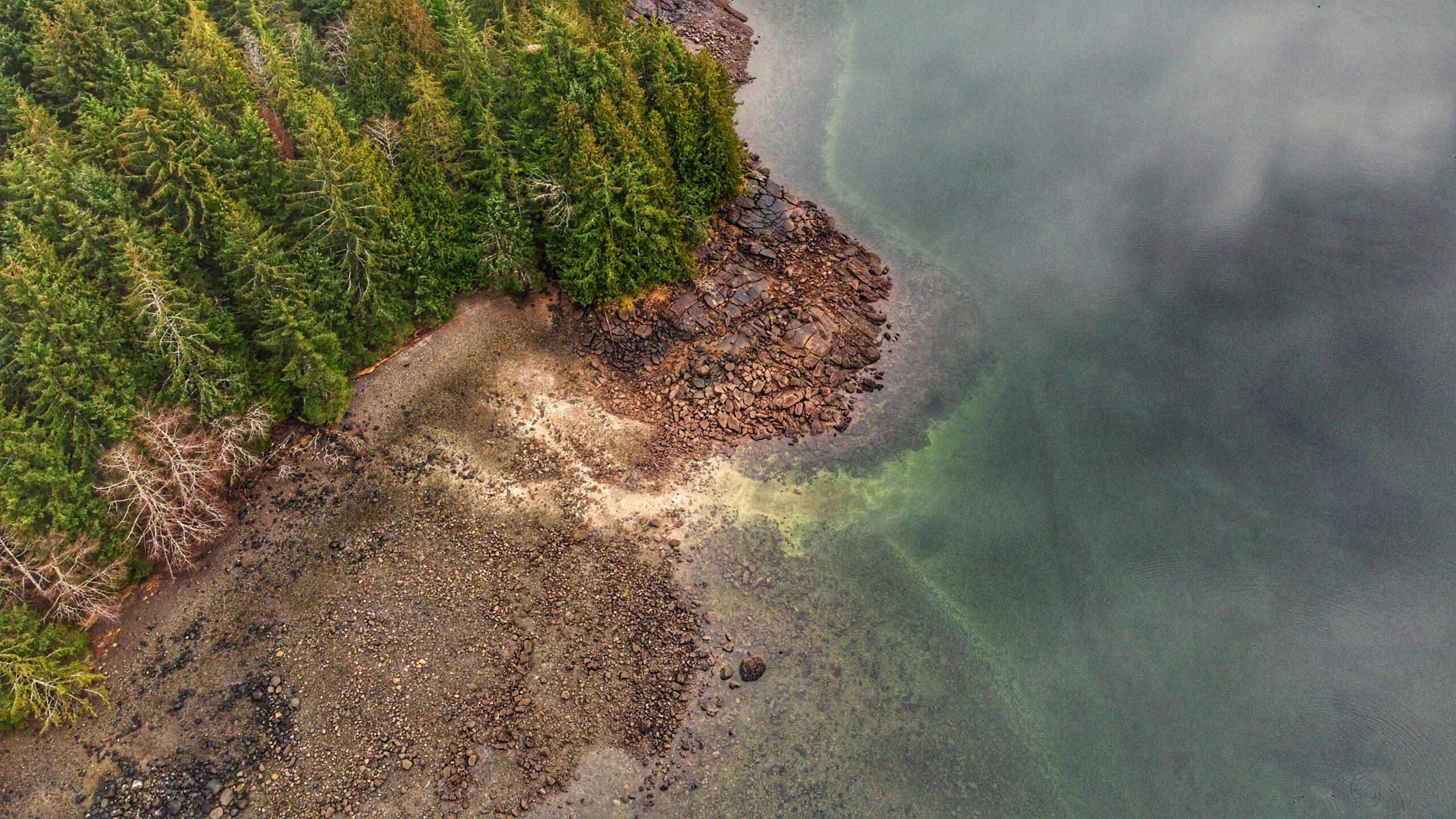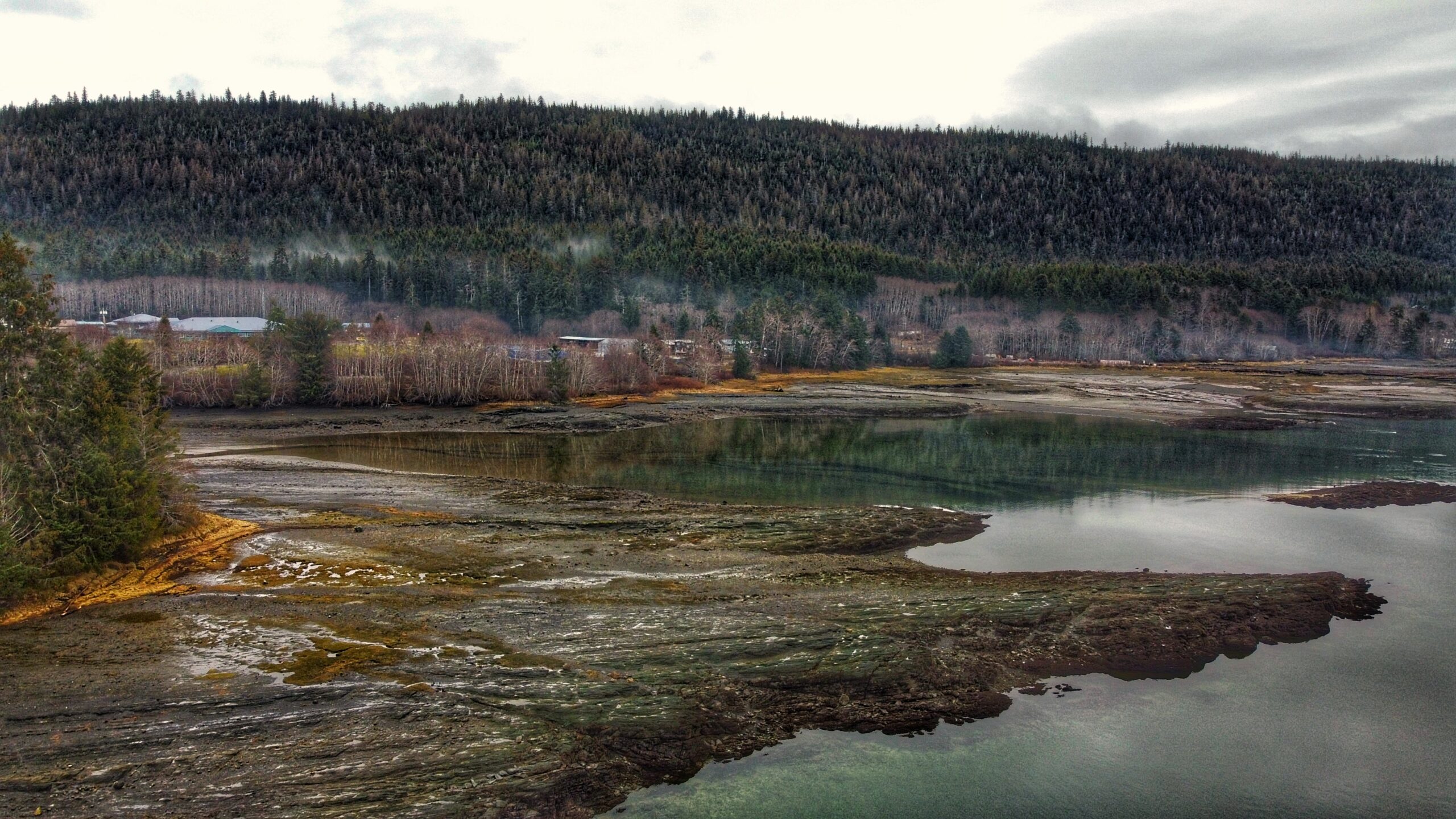The Spit Walk can be accessed at two major points – along Tacan Road or Beach Road. If you want to do this hike, we’d recommend starting at Beach Road adjacent to Lon Sharp’s “Spirit of Sandspit” (giant salmon) sculpture because there’s parking available at the site of the former government wharf.
Tag: haida gwaii beach trails
Probably the most quintessential and well-known of Naikoon Provincial Park’s attractions, the Tow Hill and Blow Hole Trails hiking routes are easy and family-friendly, thanks to boardwalks that go their entire length. At the trailhead, which is approximately 26 kilometres east of Masset, you’ll be greeted by two small Haida totems, both of whom sit on either side of a large infographic. This interpretive panel helps set the context for the hike you’re about to embark on.
It is nevertheless a nice, albeit very short, trail. The trail does not have formal trailhead signage, but it is easy enough to find. As you’re driving along Tow Hill Road, just keep an eye out for Hydro Pole 97. If you’re driving north from Masset, the pole will be on your LEFT. The unmarked trailhead will be obvious and almost immediately beside the hydro pole.
The “Naikoon Canoe Trail” is very short at just 140 meters one-way. It is also unmarked, but well worth the effort to find. Having seen and witnessed many blank or old Haida Canoes over the last few years, we were both keen and curious to locate this one after having seen it in some tourist photos.
What is it about the Pesuta that draws so many? The story/context isn’t all that exciting. Basically, the Pezuta was built as a wood-hulled steam freighter during World War I and, after the war, she was sent to Seattle for “liquidation.”
Kwuna Point Trail is located on Moresby Island at Alliford Bay. To find it, assuming you’re driving off the Kwuna ferry, turn LEFT onto Kwuna Point Road and drive to the end of the road. You will see a small parking lot and dock – park here. Like most trails on Haida Gwaii, Kwuna Point does not have formal trailhead signage; however, it is clearly signified by the Stranraer 935 Memorial.
At low tide, one could seemingly walk for miles along the unique “wavy” gray sand, admire the delicate sea life in nearby tidal pools, beach comb, ride an ATV, kayak or enjoy a nice dip in the ocean. If hiking is more your thing, the 12km (one-way) Cumshewa Head Trail can be found at the south end of Gray Bay. Please note, though, that a lack of maintenance has resulted in this trail becoming very overgrown in recent years.
Located approximately 20 kilometers north of Skidegate, Jungle Beach is a popular swimming destination for locals and tourists alike. Its ease of access – just off the highway – concomitant with the roughly 2 kilometers of sandy beach makes for an appealing day out.
Located west of Daajing Giids, and approximately 3 kilometres along the Honna Forest Service road, is the Kagan Bay Beach Trail. The Kagan Bay Beach recreational site offers six user-maintained campsites, all of which face the beach.
The Haydn Turner Beach Trail is located at the end of Oceanview Drive, towards the western end of Daajing Giids. Once at the terminus of Oceanview Drive, you’ll spy Haydn Turner campground signage at the head of a narrow road.

